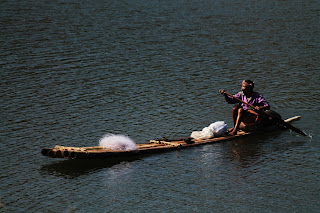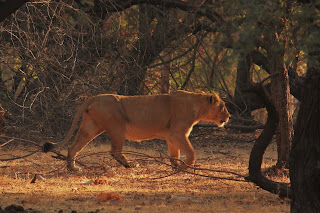Bangalore
mean IT, young rich, double income single kid, 20-something
entrepreneurs, premium flats, swanky malls, traffic congestion and
lifestyle driven up-market illness. But behind the glitter, the old
world Bangalore lives on. Tired
of today's cosmetic Bangalore, thought to live a day the retro way;
to discover its old world sights, smell and food. What
better time than a May Sunday: kids were away at their grandparents
place, giving me and Smitha a rare opportunity to be thoroughly lazy
– no school, no school-assignments, no karate classes...
Woke
up at 10am; time was ripe for a good brunch. It is a good 1 hr drive
from Marathahalli, but the mind and stomach was yearning for a snack
brunch at Koshy's bakery, off Residency Road (No 1, Wellington Road).
With their well baked chicken patties, beef cutlets and doughnuts
filling my gastronomic thoughts, it was an unusually easy drive. At
11.30am, the dream shattered as soon as we reached; they open only at
4pm on Sundays! Bad omen: the very first expedition turned to be a
failure.
It
only multiplied my hunger exponentially. Situation demanded emergency
action to calm down the mind and stomach, we quickly moved to the
near by Johnson Market (Hosur Road). This was where the Bangalore
had its weekly shopping chorus when Malls were not part of their
vocabulary. Now it is sort of a live museum (where stuff like “xerox”
is still the buzz); a highly depleted version of its original self,
but still a decent place to procure grocery, vegetables and meat.
When
in Johnson Market, 3 things are must to be explored – mutton sheek
roll from Hotel Fanoos, soda from Madeena Stores and sulaimani (lemon
tea) from Makah Cafe. These were the places where shoppers used to
hangout like in today's KFCs, McDs and Coffee Days. The lingering
hunger might have had its influence: the sheek kabab of Fanoos was
the softest mutton kabab my tongue had ever experienced. The roll
made out of it was not any far behind. The beef shawarma, however,
brought me back to the world. To push these down our pharynx, we had
soda (orange-peach soda and nannari soda; the later being the better)
from Madeena Stores just opposite Fanoos. Though it may not be a dietary prudence to top-up soda with lemon tea, we
could not resist it when Makah beckoned us.
 |
| Makkah Cafe's Sulaimani |
Though
Brigade Road is no more hep, we walked down its lanes with the sole
objective of creating some stomach-space for our next stop – Wild
Spice, tucked silently in the ground floor of Colonel Cariappa
complex building right in Richmond-Hosur Road cross. The pain of
managing the one-way and parking woes was more than compensated by
its divine Coorgi cuisine. Though it offers a reasonable choice, the
must try is pork dry fry, an authentic Coorgi fair with a tamarind
tango. In first bite itself, I submitted to it completely. Had it
with rice balls, the Coorgi way, and passion fruit juice to gulp it
down.
 |
| Coorgi pork dry fry @ Wild Spice |
It
was only 2.30pm, we had a lot of time before the 6pm show at Sangeeth
theater, Shivaji Nagar. One will not find it in “book my show”.
There is no online booking or telephonic reservation. If one has to
see movie from Sangeeth, one need to do it the old way – stand in
queue well in advance, get the ticket and rush towards the hall to
capture the best seat. Sangeeth was the first “talkies” in
Bangalore dedicated to Malayalam movies; continuing its service for
many decades.
 |
| Sangeet Theater: Very much in Kerala; the Kannada name board is somewhat out of place! |
We
passed through the archaic ham shop in MG Road (Since 1928. The fact
that it is surviving even today, that too in MG Road, is more than a
testimony
of its fan following) and proceeded to Shivaji Nagar: the original
market place. The timeless human quest for the “cheap & best”
makes Shivaji Nagar and its Russel Market and Commercial
Street still very much the places of significance for an average
Bangalore shopper. After many unsuccessful years to woo shoppers away
from it, the so called modern branded chains in fact had made truce
with Commercial Street by playing along and making their presence in
the Street.
 |
| Bangalore Ham Shop, MG Road is placed between Sony World and TAG Heuer Watch showrooms |
 |
| A beaming Russel Market |
 |
| From the street: Ear rings for sale |
After
a leisurely 1.5 hour walk across the various by-lanes of the Street,
holding the temptation to buy something, we reached Khurshid saab's
antique shop, close to the police station. This is arguably the
oldest antique shop in Bangalore. It does not have a name and is just
known by Khurshid saab who runs it – who at some 80, is himself
antique than many of the antique stuff around him.
 |
| From Khurshid saab's shop |
We
had tango-mango-tomato bhel in front of the strikingly
brick-red
St. Paul's Church (1840), which has the left over of a middle-class
British flavour, unlike the near-by higher breed
Gothic St. Mary's Basilica (1803). It was time to head to Sangeet. By
5.30pm there were sufficient like minded Mallus gathered there for
the show, “Mumbai Police”. Rs.80 for balcony was no comparison
with the average rate of Rs.250 charged in any Mall anywhere in
Bangalore for a Sunday 6pm show. There were no metal detectors or
baggage checking. We had more than sufficient reserve of banana
chips and fanta to see us through the show. After identifying an
ideal seat close to the fans, I promptly spread my legs on the seat
in front and had a comfortable movie watching experience, which I
would rate a notch higher than the Imax dome of PVR in Forum Mall.
With rats running
around your legs below the seats and moving chairs, the experience at
times bordered to 4-D. Only thing to take care in Sangeet – watch
out for chairs with only back rest and no seat to sit. Nevertheless,
the movie per se was rather forgettable.
 |
| Mango-Tomato bhel A dry fruit vendor. The brick-red wall of St. Paul's church is behind |
At
9pm we were at Millers46 steakhouse.
The crowd was yet to set in. The cowboy settings were perfect down up
to the menu card. We ordered the popular Oriental Spare Ribs and
Twice Marinated Steak. While the former lived up to its reputation,
the later was a disappointment.
Before
we wound up the day, we had a quick round inside the Cantonment
Railway station famous for its
arched pillars
between the railway lines of Platform 1 and 2. It may also probably
the only railway station to have an in-built full fledged bake house
& kitchen in its platform. On early mornings one can see through
its glass panels, fresh bread being baked and being stacked up for
its loyal customers. While returning back home, we bought some street
mango – the choice was obvious, the cheap and best, Bangalore's own
Bengarapalli.
We
retired the day with a solace filled mind and a stomach bulged with
satisfaction.
3
gastronomic cheers!!!

































